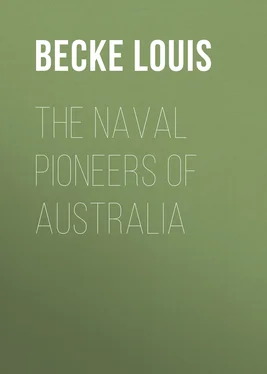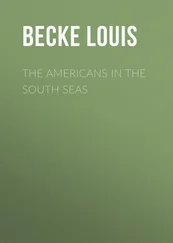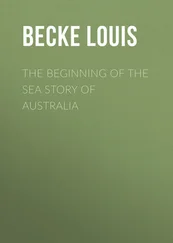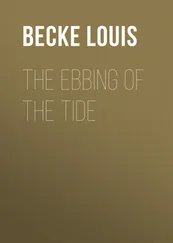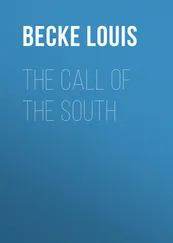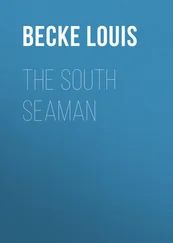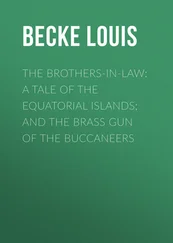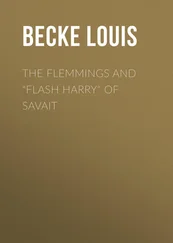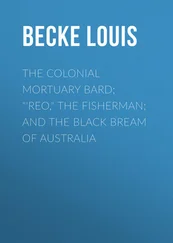Louis Becke - The Naval Pioneers of Australia
Здесь есть возможность читать онлайн «Louis Becke - The Naval Pioneers of Australia» — ознакомительный отрывок электронной книги совершенно бесплатно, а после прочтения отрывка купить полную версию. В некоторых случаях можно слушать аудио, скачать через торрент в формате fb2 и присутствует краткое содержание. Жанр: foreign_prose, literature_19, foreign_antique, на английском языке. Описание произведения, (предисловие) а так же отзывы посетителей доступны на портале библиотеки ЛибКат.
- Название:The Naval Pioneers of Australia
- Автор:
- Жанр:
- Год:неизвестен
- ISBN:нет данных
- Рейтинг книги:4 / 5. Голосов: 1
-
Избранное:Добавить в избранное
- Отзывы:
-
Ваша оценка:
- 80
- 1
- 2
- 3
- 4
- 5
The Naval Pioneers of Australia: краткое содержание, описание и аннотация
Предлагаем к чтению аннотацию, описание, краткое содержание или предисловие (зависит от того, что написал сам автор книги «The Naval Pioneers of Australia»). Если вы не нашли необходимую информацию о книге — напишите в комментариях, мы постараемся отыскать её.
The Naval Pioneers of Australia — читать онлайн ознакомительный отрывок
Ниже представлен текст книги, разбитый по страницам. Система сохранения места последней прочитанной страницы, позволяет с удобством читать онлайн бесплатно книгу «The Naval Pioneers of Australia», без необходимости каждый раз заново искать на чём Вы остановились. Поставьте закладку, и сможете в любой момент перейти на страницу, на которой закончили чтение.
Интервал:
Закладка:
Sir Joseph Banks (then plain Mr.), Green the astronomer, Dr. Solander the naturalist, two draughtsmen, and a staff of servants were also on board. The ship, for defence against savages it is to be presumed, carried ten four-pound carriage guns and twelve swivels. The food supply was for eighteen months, and consisted of beef, pork, peas, oatmeal, butter, cheese, oil, vinegar, beer, and brandy, and included materials for Dr. McBride's method of treating the scurvy. The Admiralty gave Cook a special order on this matter, in which they say:—
"The malt must be ground under the direction of the surgeon, and made into wort (fresh every day, especially in hot weather) in the following manner viz.: Take one quart of ground malt and pour on it three quarts of boiling water; stir them well, and let the mixture stand close covered up for three or four hours, after which strain off the liquor.
"The wort so prepared is then to be boiled into a panada with sea-biscuit or dried fruits usually carried to sea. The patient must make at least two meals a day on the said panada, and should drink a quart or more of the fresh infusion, as it may agree with him, every twenty-four hours. The surgeon is to keep an exact journal of the effects of the wort in scorbutic and other putrid diseases not attended with pestilential symptoms, carefully and particularly noting down, previous to its administration, the cases in which it is given, describing the several symptoms, and relating the progress and effects from time to time, which journal is to be transmitted to us at the end of the voyage."
We have a curious illustration of the state 1748-1768of the times in the manner of Cook's treatment by the Viceroy of the Brazils, where, on the way out, he touched to refresh. The Viceroy pretended to believe that the ship was a merchantman, and not a king's ship, and therefore wanted her to comply with certain port regulations which Cook was of opinion did not become the dignity of his commission. In evidence of the Endeavour being one of His Majesty's ships, Cook wrote to the Viceroy and, among other things, drew attention to the distinctive uniform of his officers, which is a reminder to us that at this time the dress of naval officers was beginning to assume uniformity. George II. suggested the colours which were adopted by the Admiralty order in 1748, and, from admirals to lieutenants, officers were now dressed in blue coats with white facings, lace collars and cuffs, and gold trimmings. The uniform was continually changing, even up to within the last few years, and nowadays one naval officer has as many different suits of uniform as would have served all the commissioned officers of a line-of-battle ship in his father's time.
When Cook left on this voyage he had, it has been shown, many advantages over Dampier in the matter of nautical instruments, but there is little doubt that he had absolutely no knowledge of the eastern coast of Australia. Dalrymple was the first to suggest that charts, which there is no doubt, did exist in Cook's time, and which do indicate the eastern coast, were known to Cook. Without going into all the evidence rebutting Dalrymple's insinuation, which has been discussed often enough, one fact is worth remembering: Dalrymple, the most learned geographer of the period, published his Historical Collection of Voyages in 1770, and in that work he makes no mention of the charts; but, on the contrary, his chart of the Pacific only indicates the coastline on the north and the west of the continent. Cook, who up to the moment of his appointment had been too busy at the practical work of his profession to find or study rare books or search libraries for documents and maps relating to the Pacific, was scarcely likely in 1768 to know what was not known to Dalrymple two years later; and also, be it remembered, Dalrymple was very indignant at being passed over in favour of Cook. It may be taken for granted that beyond such books as Dampier's Voyage, De Brosses' volumes, and such charts as the library of the Endeavour furnished, old maps afforded no help to Cook in his survey of New Holland. Of the charts Cook says something in his journal. In September, 1770, he writes:—
"The charts with which I compared such parts of this coast as I visited are bound up with a French work entitled Histoire des Navigations aux Terres Australes , which was published in 1756, and I found them tolerably exact."
As to what Cook did in the matter of dry geographical details, if the reader wants them he must go to one or other of the hundred or more books on the subject. In a few words, he sailed between the two main islands of New Zealand, discovering for himself the existence of the straits separating them. He first saw the south-east coast of New Holland at Point Hicks, named by him after his first lieutenant, and now called Cape Everard, in the colony of Victoria; from here he ran north to Botany Bay, where he anchored, took in water and wood, and buried a sailor named Forby Sutherland, who died of consumption and whose name was given to the southern headland of the bay. It is worth noting that in every original document relating to this voyage, save one chart, this bay is called Stingray Bay, after, as Cook himself says, the great number of stingrays caught in it. In one chart, in Cook's own writing, the name Botany Bay is given; but all the Endeavour logs call it Stingray Bay, and the name Botany Bay was probably an afterthought.
From here Cook coasted north, marking almost every point and inlet with such accuracy and such minuteness as fully justifies in its particular meaning the statement that Cook discovered and surveyed the whole of the eastern coast of Australia. He then sailed through Torres Straits, proving that New Guinea was a separate island, and thence made his way to Batavia.
Before leaving the coast he landed on August 21st on Possession Island, which lies about a couple of miles off the western shore of the Cape York peninsula, and there formally took possession of the continent, observing the usual ceremony of hoisting the colours and firing a volley. According to Hawkesworth, Cook took possession of the country, and named it New South Wales. There is no evidence whatever of this, and Hawkesworth himself was probably the first person to write the name. In none of the official log-books or other documents does any other name than New Holland occur, and until Flinders suggested the name "Australia," "New Holland" was the generally accepted title of the continent.
Another remarkable mis-statement, which is believed by many, relates to the discovery and naming of Port Jackson, the port of Sydney. On Sunday, May 6th, 1770, Cook's official log contains this entry:—
"Abrest of an open bay; dist. off the nearest shore, two or three miles. Lat'd. obs., 33 degrees 47.
"At this time (noon) we were between two or three miles distant from the land, and abrest of a bay or harbour, in which there appeared to be a good anchorage, and which I called Port Jackson."
It is still often written that the "open bay" was so named after a seaman by the name of Jackson on board the ship; but Sir George Jackson, who afterwards changed his name to Duckett, was at this time, with Mr. Philip Stephens, joint secretary to the Admiralty. Cook named Port Jackson and Port Stephens after these two officials, and there was no seaman named Jackson on board the Endeavour . Cook did not enter Port Jackson, and the discovery of the finest harbour in the world was left for another less well remembered, but no less efficient and zealous, naval officer.
The simple entries in the Endeavour's logbooks, to the sailor who reads them, tell far better than the fine writing of Dr. Hawkesworth the difficulties which Cook laboured under on this voyage. For example, His Majesty's ship Endeavour was so well found that on April 14th, 1770, Cook has this entry:—
Читать дальшеИнтервал:
Закладка:
Похожие книги на «The Naval Pioneers of Australia»
Представляем Вашему вниманию похожие книги на «The Naval Pioneers of Australia» списком для выбора. Мы отобрали схожую по названию и смыслу литературу в надежде предоставить читателям больше вариантов отыскать новые, интересные, ещё непрочитанные произведения.
Обсуждение, отзывы о книге «The Naval Pioneers of Australia» и просто собственные мнения читателей. Оставьте ваши комментарии, напишите, что Вы думаете о произведении, его смысле или главных героях. Укажите что конкретно понравилось, а что нет, и почему Вы так считаете.
